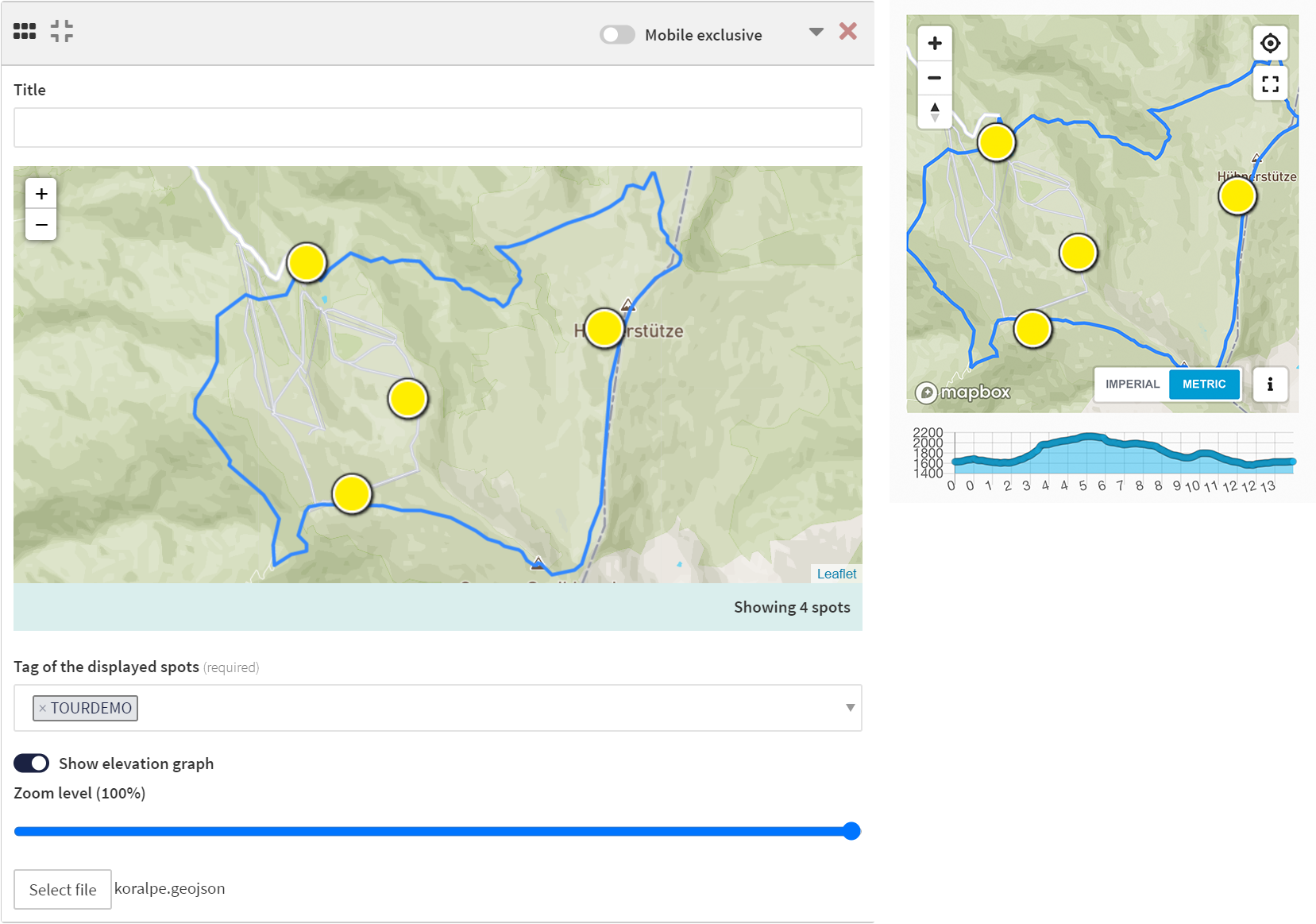Working with content blocks
Adding content, multimedia and phone functions.
A content block can include a text, an image, a video, a link, an audio file, or a download. Each block has a title and its actual content. The title is displayed as a sub-header (H2) and is optional.
Tip: The presence of sub-headers can provide enormous help to people with visual impairments and blind people. Since the texts are read to them, the sub-headers can be used for navigation.
In case there are links, you can always check them by clicking on the arrow icon next to the link.
On the left side, you always see the block how it is edited in the CMS. On the right side you see the result in the mobile web (looks similar to the apps).
Text Editor
The text editor offers some formatting options.

Audio
The audio block plays MP3, Ogg Vorbis, AAC, and M4A files from the media library. Audio files are only available for streaming. The end-user cannot easily download them.

SoundCloud
The SoundCloud block lets you embed audio streams found in SoundCloud’s online service. All it takes is inserting the URL of the respective songs.
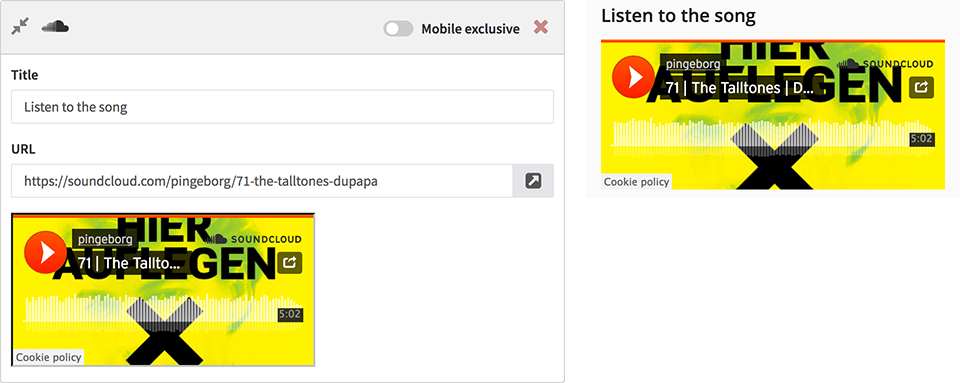
Video
With the video block, you can easily embed different videos. All it takes is inserting a valid YouTube or Vimeo video URL. You can also host video files on your server. The files should be encoded as mp4, or h.264/h.265 since most mobile browsers support these.

Links
With the link block, you can add links to various websites. These are more prominent than the links in the text editor and are highlighted with the target logo (e.g., Facebook, Twitter, LinkedIn, Spotify for songs and playlists, YouTube channel). The link types for email and phone are particularly convenient, as they make it very easy for the user to reach you. Similar are the link types for SMS and WhatsApp which also allow a pre-written text to be sent by the user.
Another useful feature is the Google Maps link with which you can quickly provide navigation instructions.
Attention: Links to Apple’s iTunes Store are shown only on iPhones. Those to Google’s Play Store only on Android devices.
Note: Please, always use https instead of http because apps only work properly with secure links. http alone is not considered secure anymore.

Images
The image block adds photos or graphics via the media library. Images uploaded with the media picker will be stored in your media library.
For the mobile web, landscape format images are best suited because they will always be displayed in full-width. Using the width-slider, you can determine how much space they are allowed to take. This is particularly useful for images in portrait format.
You can optionally specify to which external website the users will be directed by clicking on the image.
You can upload pictures with no limit in file size. Users on mobile phones and also on your website will see the images in a version that is perfect for their device. The scaling in optimizing happens automatically.
Along with the caption, you should always mention the copyright holder – unless this is you and you don’t want to be mentioned.
Attention: Please add an alternative description to the image. This helps people with seeing disabilities. If you do not enter an “Alt Tag” the caption will be used instead.
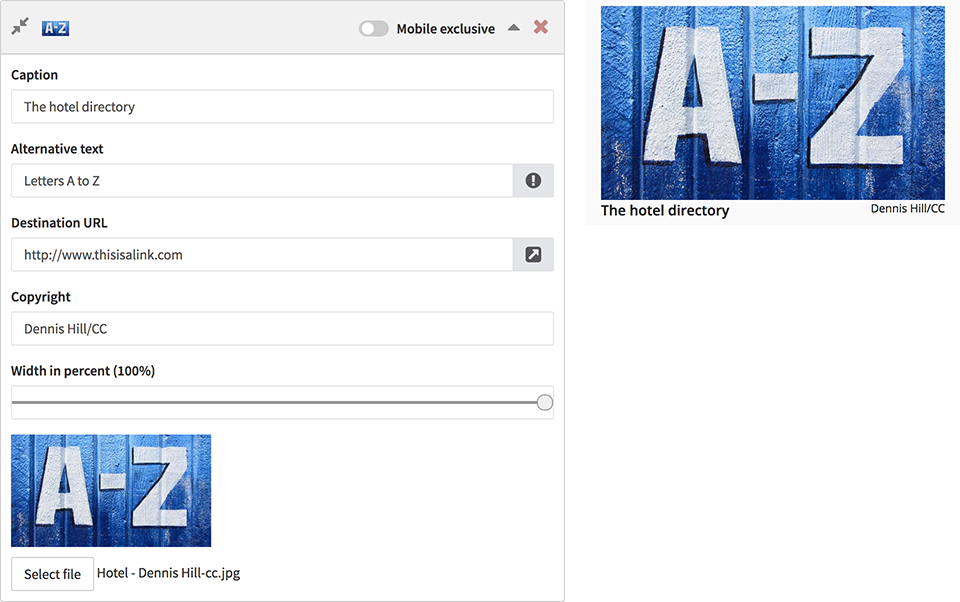
Pages – Internal Links
This content block is used for quick linking of pages on related topics or for creating summary pages.
Shown is a preview of the cover image, the title, and the opening credits of the linked page. As seen in the right example, it is crucial to have a short title and an excerpt of the right length.

List
This content block is a list of pages with the same tag that is composed just as the content block page.
You can control the order (ascending or descending) of the articles with the (only internally visible) name of the article.
This block can be of great use if you want to offer a news/blog section. It is also handy if you're going to group-related pages on an overview page (e.g., for restaurants in a particular town).
If you later add this tag to other pages, they will appear in the list automatically.
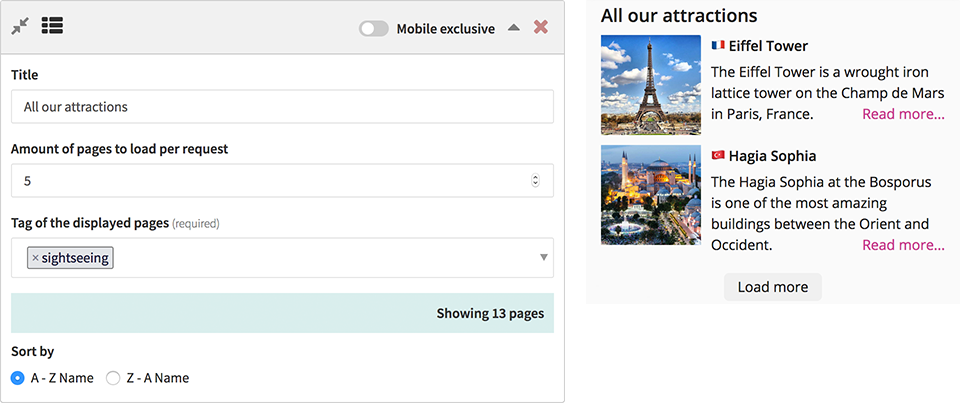
Include
The content block Include includes another page with (optionally) its cover image. The title and excerpts are hidden.
This is of great practical use if you want to display the same information on any or all pages. Just think of a footer that shows an upcoming event or social links.
It is always a good idea to include a(n empty) page on all pages. Once you need it you can edit just one piece of information for sharing it on every/many pages.

Download
The content block Download helps to provide downloadable files such as ebooks, calendar items, and business card files. The user may save the files directly to their address book or calendar. You can create such files in programs like Microsoft Outlook or online.
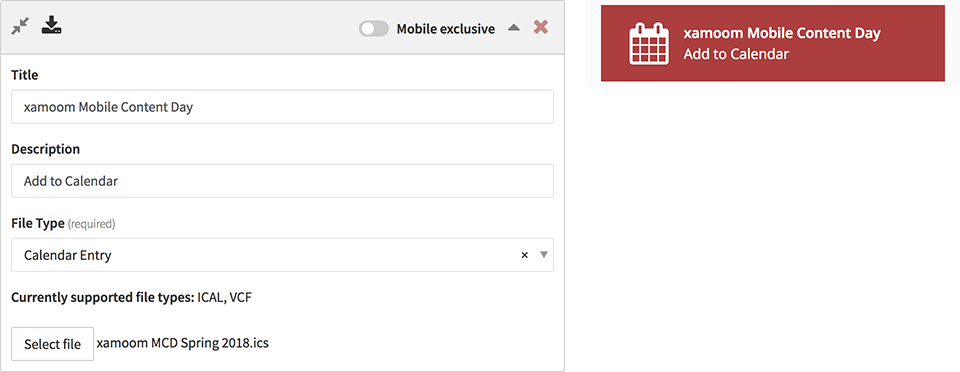
Map
This allows you to display a map with spots that have been grouped with tags (e.g., by geography or themed topics).
You can show the user all spots and you can control if she/he can access the page that is behind a spot.
If you add a tag, you will see how many spots are available with this tag. If you later add the same tag to other spots they will appear automatically.
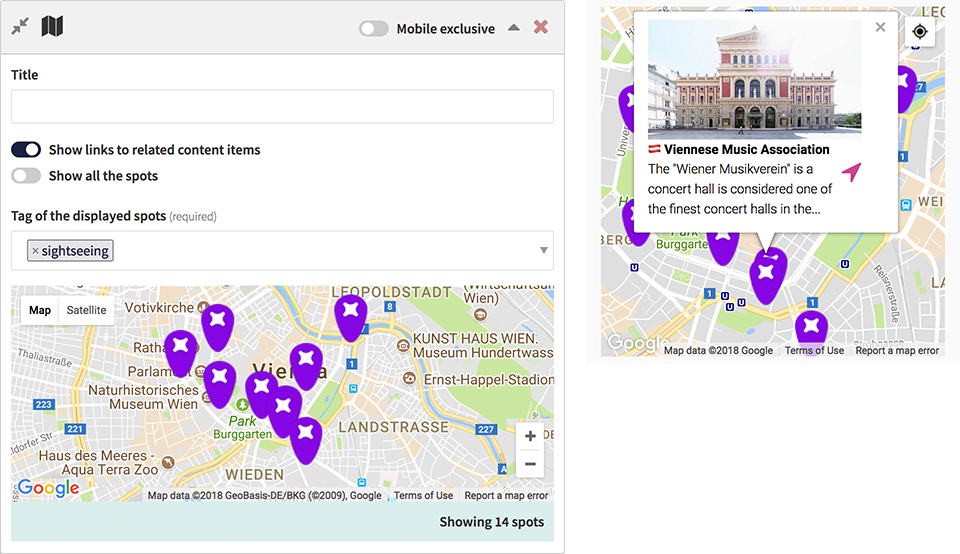
Gallery
You can arrange not just images but various other content blocks in galleries. Users can then horizontally browse through them. Supported are all combinations of the following content blocks:
- images
- videos
- texts
- audios
In order to create a gallery, you first have to create a page containing all blocks in the desired order. On the target page, you then insert the content block Gallery and search for the name of the page that contains the gallery.
Note: You achieve the best results if all your blocks have the same height.

Tours
This content block enables you to draw a tour on maps.
You can also set a title for the tour. To do so, upload a .GPX or .GeoJSON file.
Along the track, there can be spots that you can insert using the right tag for it. Below the map, there can also be an elevation chart that provides more information about the altitudes along the trail.
The data for the elevation track and behind the info button is extracted automatically from the GPX file upon upload.
The end-user can switch between imperial and metric units.
